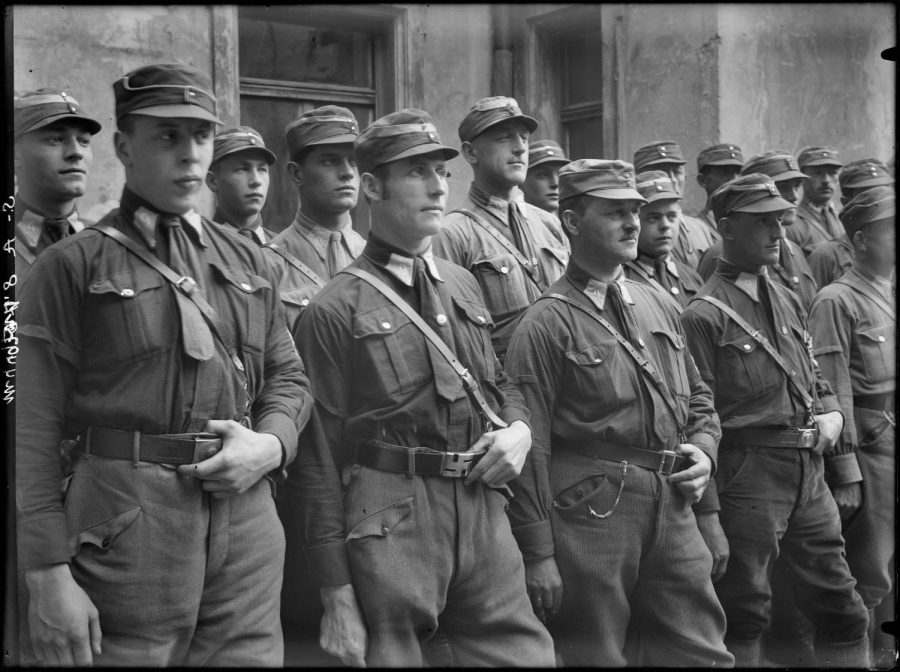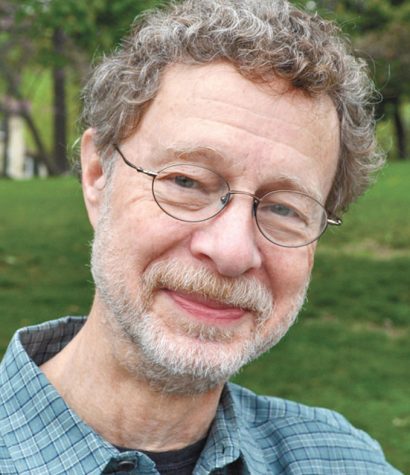Ken Burns’ new doc series asks tough questions about the U.S. and the Holocaust
Published September 11, 2022
“The U.S. and the Holocaust,” a new documentary miniseries by filmmakers Ken Burns, Lynn Novick, Sarah Botstein and their colleagues, searches for the true essence of the United States of America in actions the country took and did not take in the years before, during and after the Holocaust.
The search unfolds through the small and large stories of people, nations and events we see and hear during three two-hour presentations airing at 7 p.m. on three successive nights — Sept. 18, 19 and 20 — on PBS (Channel 9 in St. Louis and online at ninepbs.org).
An investment of six hours will bring a broader and clearer understanding of the elements that came together to make the Holocaust a reality and limited efforts to help Jews escape death: a worldwide economic depression, a world war, organized systems for mass murder created by Nazis for use against European Jewish populations, and ugly centuries-old prejudices in the U.S. and elsewhere.
To tell these stories, Burns and his partner documentarians draw upon factual material from years of exhaustive research and rich archival film footage, much of it restored to pristine viewing quality.
The filmmakers then apply their award-winning professional skills to ensure that the stories hold together and the moving pictures, still photos and sounds connect with viewers’ hearts, as well as their brains.
Many of those emotional connections are made through the stories of people and families who were caught in the current of powerful forces of history they could not control. You will see and hear from members of the Stern, Mendelsohn, Jaeger, Messinger, Hilsenrath and Geiringer families throughout the six-hour documentary.
I’ve watched all six hours, and it sometimes was as emotionally challenging as it was historically enlightening.
Part One starts with the U.S. government’s enactment of the Chinese Exclusion Act of 1882, the first time that admission to the United States was limited for people not born here. It concludes in 1938 just after Germany invades and occupies Austria.
It tracks federal and state policies and U.S. public opinion opposed to immigration in the early 1930s, much of it driven by outright racism and antisemitism among officials at the State Department and by a parallel vein of antisemitism that coursed just under the surface of U.S. society. And it describes the federal system for issuing entry visas to the United States that had the practical effect of denying admission to, among others, Jews in Europe trying to flee the growing Nazi threat.
Part One also explores the rapid growth during the Great Depression of U.S.-based Nazi supporters and other racist groups and the spread of fake-science claims that non-whites were biologically inferior to whites.
It wasn’t by accident, the film notes, that 1935 Nazi laws stripping Jews of all rights and status in Europe owed much to Jim Crow laws already in use in southern American states to deny rights to Blacks.
Part Two covers the period from 1938 through 1942, including the Nazi seizure of Poland and, two years later, western parts of the western Soviet Union. These actions left large Jewish populations subject to escalating Nazi campaigns of mass murder.
This period also includes the widespread violence against Jews by Nazi SS troops, Gestapo secret police and German civilians on Kristallnacht (Nov. 9, 1938), which drew substantial coverage and condemnation in U.S. newspapers. The negative coverage, however, did not lead Congress to lift or loosen immigration quotas that would have allowed more Jews to escape German control.
Neither did credible 1942 reports to Washington from diplomats and others that Hitler had begun speaking explicitly about exterminating all Jews in Europe.
The third and final night of the film documents the Nazi activation of an extermination plan to use poison gas chambers to significantly increase the death toll of Jews; U.S. entry into World War II in late 1941; and the later advance of allied troops and the eventual liberation of Nazi concentration and death camps.
The film also reports how rebellious officials in the Treasury Department began urging a resistant President Franklin D. Roosevelt to increase actions to rescue European Jews facing death. He created a War Refugee Board that made progress in that direction.
A concluding section of Part Three addresses troubling questions about antisemitism and white supremacy in the United States at the time of the Holocaust and how much those factors inhibited federal action to save Jewish lives before and during World War II. It then looks at the degree to which a resurgence of those ugly prejudices today interferes with America being able to live up to its ideals.
Taken as a whole, the documentary leaves no doubt that the U.S. government did not do as much as it could have to save Jewish lives during the early Nazi years and World War II. Nor is there any question that antisemitism at many levels of society here and abroad, including within the U.S. government, contributed to those failures.
But the film also grants that the situation in the United States was more complicated at the time than some analysts now contend with the benefit of historical hindsight. Still, our country could have done more and should have done better. And in the future, we should know better.
Finally, I want to describe a moment in the last half of Part Three that caught me completely by surprise.
It is a piece of archival film from 1945 — rare for having its original sound. It records an event at the Dachau concentration camp sometime after its liberation by U.S. troops.
In the segment, a man stands on a wooden platform before a large group of liberated prisoners. Speaking into a microphone, he identifies himself as David Max Eichhorn, a U.S. Army Captain and also a rabbi. He holds in his arms a covered Torah scroll. Behind him is what appears to be a small, portable wooden ark.
He speaks briefly to the gathered men, affirming his gratitude for their presence and their survival and his respect for them.
And then he begins to sing to them in Hebrew. It is a familiar prayer, though I could not name it. The camera shifts to the men standing and listening, and you can see some of them moving their lips to the words.
Now, I am proud to be Jewish. I am proud of my Jewish family heritage. But I am not observant.
Nevertheless, when Rabbi/Capt. Eichhorn began to sing on the screen I was watching, I was overcome with tears and sobbing that continued until the segment ended. I had the same reaction when I watched the segment a second time. And, truth be told, I have had to fight back the same reaction as I type this account.
I can’t explain this, and I don’t want to try to analyze it. But it was not something I anticipated as I watched this six-hour documentary as I prepared to write about it.
















